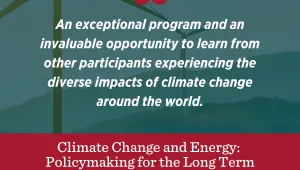Abstract
We study the incentives to participate in and the stability of international climate coalitions using the integrated assessment model WITCH. We perform the analysis of coalitions profitability and stability under alternative assumptions concerning the pure rate of time preference, the social welfare aggregator and the extent of climate damages. We assess the profitability, stability, and potential stability of a number of coalitions which are potentially effective in reducing emissions. We find that only the grand coalition under a specific sets of assumptions finds it optimal to stabilise GHG concentration below 550 ppm CO2-eq. However, the grand coalition is found not to be stable, even through transfers. However, there exist potentially stable coalitions, but of smaller size, though still potentially environmentally effective. Depending on the assumptions made, they could achieve up to 600 ppm CO2-eq.
INTRODUCTION
The global public good nature of the climate change and its causes requires cooperation among countries and broad-based participation of at least major economies is required for any coalition to be environmentally effective. However, stable coalitions are generally small and might well not address satisfactorily the environmental problem, especially when they deal with a global externality as in the case of climate change (Barrett 1994, Carraro and Siniscalco 1993, Asheim et al. 2006, Bréchet et al. 2011). When the costs and benefits of international cooperation are large, as in the case of GHG emissions reduction, a stable agreement is hard to achieve, reflecting the difficulty to provide sufficient participation incentives to widely heterogeneous countries. Only when the benefits from cooperation are small, stable coalition can succeed to sustain a large number of signatories (Barret 1994). But in this case, they are not effective in reducing emissions considerably.
A successful international climate policy framework will have to meet two conditions, build a coalition of countries that is potentially effective and give each member country sufficient incentives to join and remain in this coalition. Such coalition should be capable of delivering ambitious emission reduction even if some countries do not take mitigation action. In addition, it should meet the target without exceedingly high mitigation costs and deliver a net benefit to member countries as a whole. The novel contribution of this paper is mostly methodological, but it also adds a better qualification of well-known results that are policy relevant. The use of large scale macroeconomic models calibrated on historical data allow generalising results that have been obtained under more specific, and at times simplifying, assumptions and therefore it represents a complement to the broad literature on coalition theory. To our knowledge only a few studies have used a similar approach to assess climate coalitions. Bosello et al. (2003) study the effects of different equity rules on the incentives to cooperate using the dynamic integrated growth and climate model FEEM-RICE. Carraro et al (2006) use a stylized integrated assessment simulation model to show how appropriate transfers may induce almost all countries into signing a self-enforcing climate treaty.
Bréchet et al. (2011) compare different stability concepts using a modified version of Nordhaus and Yang (1996) model. Nagashima et al. (2009) use the STACO model to compare different transfer schemes and their impact on participation incentives, global welfare and abatement efforts. However, the STACO model does not explicitly model the nexus between economy, energy, and climate, but rather relies on reduced-form cost and benefit functions. The ClimNeg World Simulation model used by Bréchet et al. (2011) and Carraro et al. (2006), as well as the FEEM-RICE model, are a step ahead as they encompass economics, climatic, and impact dimensions. However, they do not fully model the energy-emission linkage and they neglect international interactions through the diffusion of clean technologies developed for abatement purpose.
The modelling framework used in this paper represents a step-up over the models just mentioned. The WITCH model, used in the present paper, has two major strengths in this specific context. It belongs to the class of so-called integrated assessment models (IAMs), and therefore it incorporates explicitly the gains from emission reductions in terms of avoided climate change through regional damage functions that feed climate change back into the economy. It has a game-theoretic structure. The 12 model regions and/or coalitions of regions behave strategically with respect to all major economic decision variables, including emission abatement levels, by playing a non-cooperative Nash game. Therefore, when deciding whether or not to cooperate on GHG emission control, countries take into account how their decisions affect all other countries, and whether these countries will cooperate or remain outside the coalition. Mitigation options are fully modelled as investment choices in alternative energy technologies, abatement in non-CO2 gases, and changes in deforestation patterns. Moreover, technological change in energy efficiency and clean technologies is endogenous and reacts to price and policy signals. Technological innovation and diffusion processes are also subject to international spillovers; this means that the model can represent multiple externalities, which can be partly internalized when coalitions are formed.
Bosetti et al. (2009) evaluated the potential environmental effectiveness of all 4069 coalitions that would result from combination of the 12 regions. In particular, all coalition that could in principle deliver the stabilisation targets commonly discussed in the policy arena were identified. In the present paper we take stock of that analysis and, within the set of all possible climate coalitions, we focus on those that have the potential to meet an ambitious enough global mitigation target. These are coalitions whose global emission path would be consistent with long-run stabilisation of global GHG concentration at 550 ppm CO2-eq, despite the Business-as-Usual (BAU) emission pathway of non-participating regions. For this subset of coalitions, we evaluate whether the welfare of each participating country is larger than the welfare it would obtain from withdrawing from the coalition and free riding on other participants’ abatement efforts (internal stability). We also checked whether there are international financial transfers that can compensate for the free riding incentives (potential internal stability). Given the uncertainties involved in predicting and valuing the future damages and risks from climate change, the analysis is performed under four alternative combinations of damage and discount rate assumptions. A low-damage case is based on the damage assessment in Nordhaus and Boyer (2000), while a high-damage case incorporates the more recent, upward revisions made for instance by Hanemann (2008) or Stern (2007). A low-discounting case assumes a (pure) utility discount rate of 0.1%, in line with Stern (2007), while a high-discounting case takes the 3% value used in Nordhaus (2007). Finally we assess the effect of different weighting in the aggregation of regions' welfare and the effect this has on main findings.
Following a presentation of WITCH's game-theoretic framework in Section 2, Section 3 assesses the basic individual incentives for countries to participate in coalitions. Section 4 brings together the incentive effects associated with damages and abatement costs to analyse coalition formation and stability. Conclusions follow.
Valentina Bosetti, Fondazione Eni Enrico Mattei
Carlo Carraro, Fondazione Eni Enrico Mattei
Enrica De Cian, Fondazione Eni Enrico Mattei
Emanuele Massetti, Fondazione Eni Enrico Mattei
Massimo Tavoni, Fondazione Eni Enrico Mattei
Bosetti, Valentina, Carlo Carraro, Enrica De Cian, Emanuele Massetti and Massimo Tavoni. “Incentives and Stability of International Climate Coalitions: An Integrated Assessment.” Harvard Project on Climate Agreements, Belfer Center, March 2012



